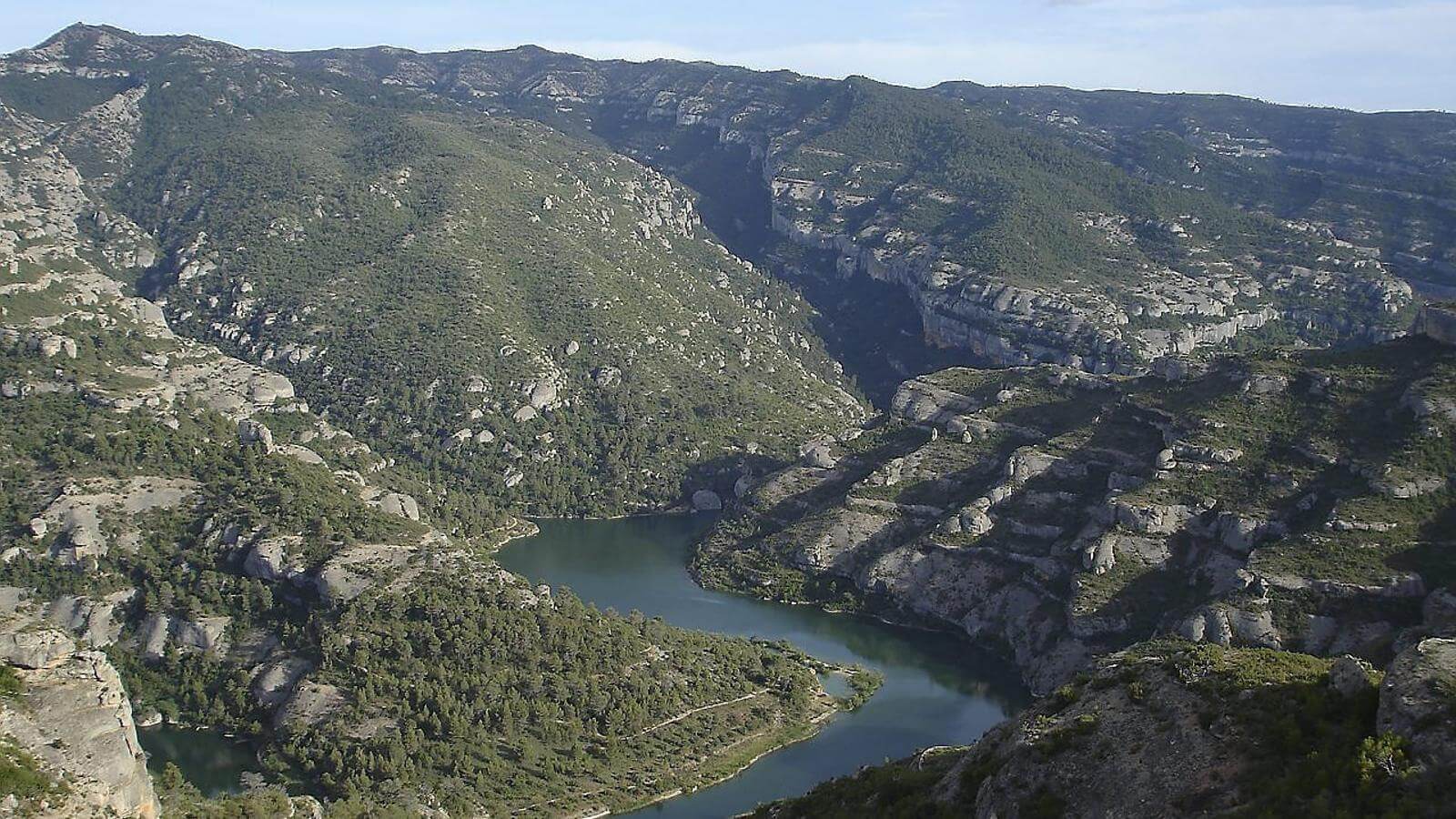Contenidos:
- 1 Explore the Serra de Montsant Nature Park
- 2 Unstoppable nature: mountains and landscapes
- 3 Scenic routes on the Serra de Montsant
- 4 Points of interest and activities to be enjoyed
- 5 Climate and setting in the park
- 6 Spirituality in Montsant
- 7 Conservation and sustainable development
- 8 The cultural mosaic of the Montsant Nature Park
- 9 The cultural mosaic of the Montsant Nature Park
Explore the Serra de Montsant Nature Park
The Serra de Montsant Nature Park, in the region of Priorat, Catalonia, majestically spans 9,242 hectares and is home to several towns. From La Bisbal de Falset to La Vielella Baixa, this expansive area bears witness to the region’s rich cultural and geographical diversity.
Unstoppable nature: mountains and landscapes
The main feature of the Montsant limestone massif is its steep and rounded relief. Erosion over the course of the centuries has sculpted a landscape full of shelters, caves, chasms and ravines.
The park’s most emblematic stamp is the spectacular rocky wall of the Mayor cliff, on the southern face, looking towards the Sierra Mayor. This region is home to the highest peaks in Montsant, such as Cogulla (1,063 metres), Piló dels Senyalets (1,109 metres) and the magnificent Roca Corbatera (1,163 metres), the highest point of the mountain range.
Scenic routes on the Serra de Montsant
The Serra de Montsant Nature Park not only offers some incredible landscapes, but also a rich variety of outdoor pursuits. From hiking along the many marked trails to climbing in permitted areas and potholing in hidden caves, there are options for every level. The less-explored corners reveal the true nature of the park, with the Peligs Ravine dividing the mountain into two main summits and the Sierra Mayor, which rises inland.

Points of interest and activities to be enjoyed
The Serra de Montsant Nature Park not only offers some incredible landscapes, but also a rich variety of outdoor pursuits. From hiking along the many marked paths to climbing in permitted areas and potholing in hidden caves, there are options for every level. In this park, the great variety of activities on offer are the main attractions, be they organised by businesses and individuals or promoted by the Park itself, in collaboration with institutions and entities. With lines of work focussed on preserving and sharing the natural wealth, it has become an unmissable destination for adventure and nature enthusiasts.
Climate and setting in the park
The Serra de Montsant Nature Park not only offers some incredible landscapes, but also a rich variety of outdoor pursuits. From hiking along the many marked paths to climbing in permitted areas and potholing in hidden caves, there are options for every level. In this park, the great variety of activities on offer are the main attractions, be they organised by businesses and individuals or promoted by the Park itself, in collaboration with institutions and entities. With lines of work focussed on preserving and sharing the natural wealth, it has become an unmissable destination for adventure and nature enthusiasts.

Spirituality in Montsant
Centuries of spirituality have inspired the name of this mountain range, Montsant. Old place names, such as Colldemònecs, and archaeological remains, such as the medieval tombs, indicate a spiritual presence since the Muslim era. The Carthusian order of Santa Maria d’Escaladei, which settled in the area in 1194 until its expropriation in 1835, and the hermitages dispersed around the mountain emphasise the rich spiritual history of Montsant.
Conservation and sustainable development
The Serra de Montsant Nature Park has a history that dates back to planning proposals in 1932. Subsequent recognitions and studies, such as the White Paper of 1976, highlighted the importance of Montsant as an area that deserved special protection measures.
The official declaration in 2002 marked a commitment to preserving its geological, biological, scenic and cultural values, respecting the sustainable development of its resources to contribute to social and economic stimulation and territorial structuring. The park’s management has become a case study in the Delos Initiative, promoted by the IUCN, which examines how spiritual values benefit conservation management.
The extraordinary biodiversity of Montsant
The Serra de Montsant Nature Park stands out for its exceptional biodiversity, accommodating a variety of flora and fauna. With over 1280 flower species, which represent more than half of the known species on the Iberian Peninsula and over a third of those in Europe, Montsant has become a unique biological refuge.
This biogeographical wealth is reflected in its vegetation, from holm-oak forests with viburnums to woodlands and dry oak groves made up of small-leaf oaks.

The cultural mosaic of the Montsant Nature Park
Montsant no es solo naturaleza; también es un mosaico cultural. Su patrimonio arquitectónico, histórico y etnográfico revela siglos de ocupación humana y actividades económicas.
Desde tiempos prehistóricos hasta la expansión demográfica, económica y social en los siglos XVIII y XIX, Montsant ha sido testigo constante de la presencia humana. Masías, molinos, construcciones de piedra seca, hitos, cañadas y abrigos amurallados narran la historia de este territorio. Paralelamente, el patrimonio inmaterial se manifiesta en creencias, fiestas populares y oficios tradicionales.
The cultural mosaic of the Montsant Nature Park
Montsant is not just about nature; it is also a cultural mosaic. Its architectural, historical and ethnographic heritage reveals centuries of human occupation and economic activities.
From prehistoric times to the demographic, economic and social expansion of the 18th and 19th centuries, Montsant has been a constant witness of human presence. Country houses, windmills, dry-stone constructions, landmarks, small valleys and walled shelters narrate the history of this area. In parallel, its intangible heritage is seen in the beliefs, popular festivals and traditional trades.




